
Golang is a programming language developed by Google. It has the characteristics of efficiency, simplicity, concurrency, etc. As one of the very important features of Golang, interface can effectively Improve code flexibility and reusability. This article will deeply explore the role and practice of Golang interfaces, combined with specific code examples, to help readers better understand and apply the concept of interfaces.
1. The concept and role of interface
As an abstract type, interface defines the behavior specifications of objects, but does not implement these behaviors. Through interfaces, we can define which methods an object should have and do not care how these methods are implemented, thus achieving code decoupling and increased flexibility. In Golang, an interface is a type, a collection of methods, and polymorphism can be achieved through interfaces.
The main functions of interfaces include:
- Achieving polymorphism: Through interfaces, different types can implement the same method, thereby achieving different behaviors when actually called.
- Improve reusability: Defining the behavior specifications of objects through interfaces can make different types of objects have the same behavior specifications, thereby improving the reusability of code.
- Decoupling and reducing coupling: Interfaces can separate implementation details and interface definitions, reduce the coupling between modules, and improve the maintainability and scalability of the code.
2. Golang interface practice
2.1 Define the interface
In Golang, defining an interface is very simple, just use the type keyword Just define an interface. The following is a simple interface definition example:
package main
import "fmt"
type Car interface {
Run()
Stop()
}
type Benz struct {
Model string
}
func (b Benz) Run() {
fmt.Println(b.Model, "is running.")
}
func (b Benz) Stop() {
fmt.Println(b.Model, "stopped.")
}
func main() {
var c Car
b := Benz{Model: "Benz"}
c = b
c.Run()
c.Stop()
}In the above example, a Car interface is defined, including Run() and Stop( ) Two methods. Then a Benz structure is defined and the methods of the Car interface are implemented. In the main function, the Run() and Stop() methods are called through the interface type Car.
2.2 Interface combination
The interface in Golang can be extended through combination, so that the combination and expansion of the interface can be realized. The following is an example of an interface combination:
package main
import "fmt"
type Animal interface {
Name() string
}
type Behavior interface {
Eat()
Sleep()
}
type Cat struct {
name string
}
func (c Cat) Name() string {
return c.name
}
func (c Cat) Eat() {
fmt.Println(c.Name(), "is eating.")
}
func (c Cat) Sleep() {
fmt.Println(c.Name(), "is sleeping.")
}
func main() {
var animal Animal
var behavior Behavior
cat := Cat{name: "Tom"}
animal = cat
behavior = cat
fmt.Println(animal.Name())
behavior.Eat()
behavior.Sleep()
} In the above example, two interfaces Animal and Behavior are defined, where Animal The interface has a Name() method, and the Behavior interface has Eat() and Sleep() methods. Then define a Cat structure and implement the methods of these two interfaces. Finally, the relevant methods are called through the interface type.
Summary
Through the above examples, we have deeply analyzed the functions and practices of Golang interfaces. As one of the very important features in Golang, interfaces can help us achieve efficient and flexible code design and implementation. By rationally using interfaces, we can achieve code decoupling, flexible expansion, and a high degree of reusability, thereby improving code quality and maintainability. I hope this article can help readers better understand and apply the important concept of interfaces.
The above is the detailed content of In-depth analysis: The role and practice of Golang interfaces. For more information, please follow other related articles on the PHP Chinese website!
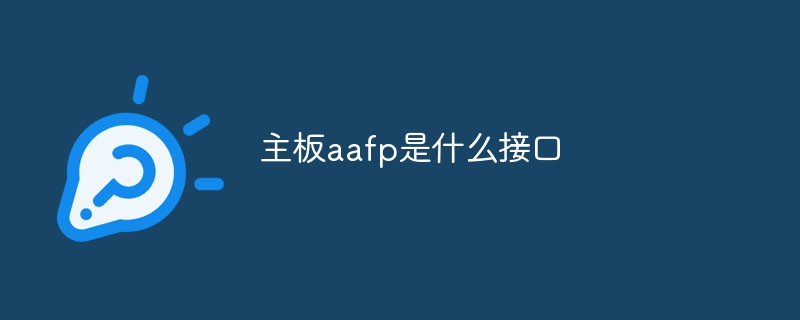 主板aafp是什么接口Aug 29, 2022 am 10:50 AM
主板aafp是什么接口Aug 29, 2022 am 10:50 AM主板上的aafp是音频接口;该接口的功能是启用前面板的“3.5mm”插孔,起到传输音频的作用,aafp跳线基本上由两个部分组成,一部分是固定在主板、硬盘等设备上的,由两根或两根以上金属跳针组成,另一部分是跳线帽,是一个可以活动的组件,外层是绝缘塑料,内层是导电材料,可以插在跳线针上。
 cha fan表示什么风扇Sep 15, 2022 pm 03:09 PM
cha fan表示什么风扇Sep 15, 2022 pm 03:09 PM“cha fan”表示的是机箱风扇;“cha”是“chassis”的缩写,是机箱的意思,“cha fan”接口是主板上的风扇供电接口,用于连接主板与机箱风扇,可以配合温度传感器反馈的信息进行智能的转速调节、控制噪音。
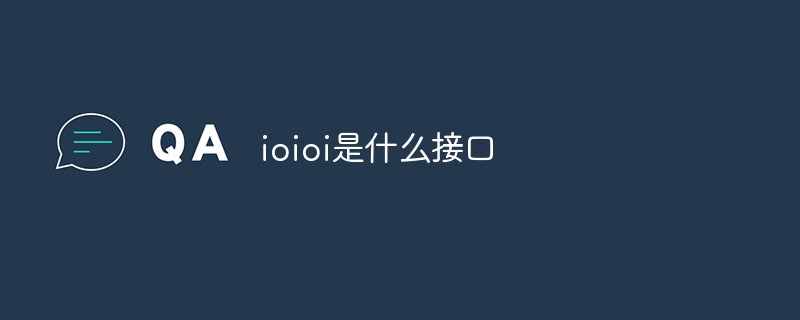 ioioi是什么接口Aug 31, 2022 pm 04:50 PM
ioioi是什么接口Aug 31, 2022 pm 04:50 PMioioi是指COM接口,即串行通讯端口,简称串口,是采用串行通信方式的扩展接口。COM接口是指数据一位一位地顺序传送;其特点是通信线路简单,只要一对传输线就可以实现双向通信(可以直接利用电话线作为传输线),从而大大降低了成本,特别适用于远距离通信,但传送速度较慢。
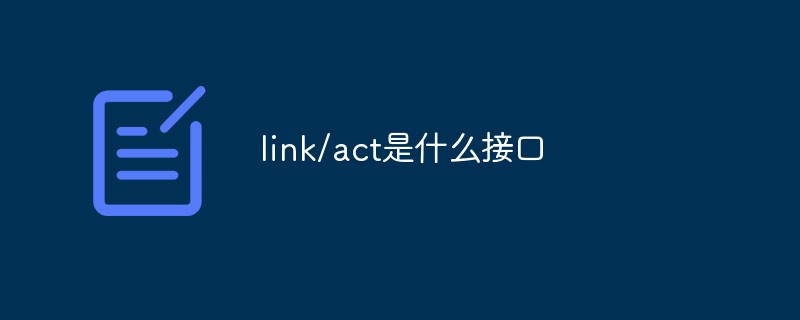 link/act是什么接口Feb 23, 2023 pm 04:14 PM
link/act是什么接口Feb 23, 2023 pm 04:14 PMlink/act是物理数据接口;交换机上的link/act指示灯表示线路是否连接或者活动的状态;通常Link/ACT指示灯用来观察线路是否激活或者通畅;一般情况下,若是线路畅通,则指示灯长亮,若是有数据传送时,则指示灯闪烁。
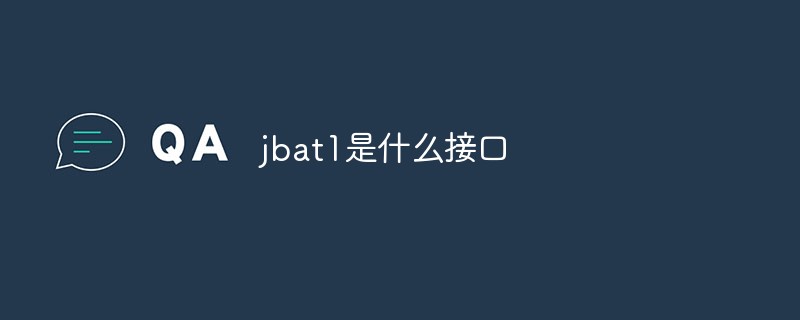 jbat1是什么接口Jun 23, 2021 pm 01:38 PM
jbat1是什么接口Jun 23, 2021 pm 01:38 PMjbat1是主板电2113池放电跳线接口,对于现在市面上常见的主板来说,它们都设计有CMOS的放电跳线,让用户在操作时更加便捷,它也因此成为了CMOS最常见的放电方法。
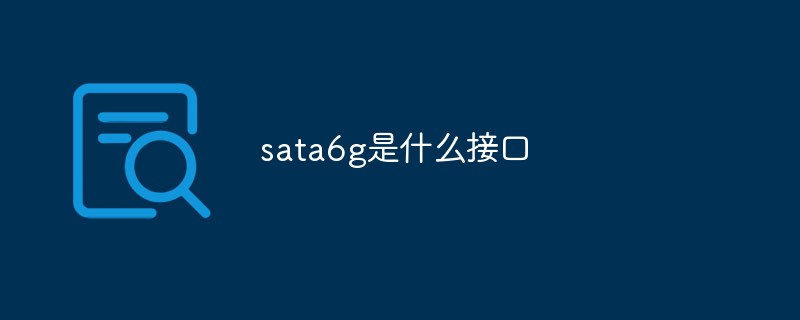 sata6g是什么接口Sep 14, 2022 am 11:46 AM
sata6g是什么接口Sep 14, 2022 am 11:46 AMsata6g是数据传输速度为“6G/s”的sata接口;sata即“Serial ATA”,也就是串行ATA,是主板接口的名称,现在的硬盘和光驱都使用sata接口与主板相连,这个接口的规格目前已经发展到第三代sata3接口。
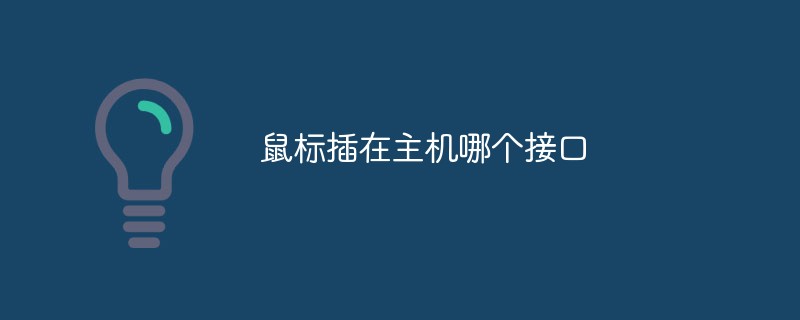 鼠标插在主机哪个接口Sep 13, 2022 pm 03:50 PM
鼠标插在主机哪个接口Sep 13, 2022 pm 03:50 PM鼠标插在主机的串口接口、PS/2接口或USB接口上。串行接口是最古老的鼠标接口,是一种9针或25针的D型接口,将鼠标接到电脑主机串口上就能使用。PS/2接口是1987年IBM公司推出的鼠标接口,是一种鼠标和键盘的专用接口,是一种6针的圆型接口。USB接口,是一种高速的通用接口,具有非常高的数据传输率,且支持热插拔。
 dc接口是什么意思Aug 24, 2022 am 10:47 AM
dc接口是什么意思Aug 24, 2022 am 10:47 AMdc接口是一种为转变输入电压后有效输出固定电压接口的意思;dc接口是由横向插口、纵向插口、绝缘基座、叉形接触弹片、定向键槽组成,两只叉型接触弹片定位在基座中心部位,成纵横向排列互不相连,应用于手机、MP3、数码相机、便携式媒体播放器等产品中。


Hot AI Tools

Undresser.AI Undress
AI-powered app for creating realistic nude photos

AI Clothes Remover
Online AI tool for removing clothes from photos.

Undress AI Tool
Undress images for free

Clothoff.io
AI clothes remover

AI Hentai Generator
Generate AI Hentai for free.

Hot Article

Hot Tools

DVWA
Damn Vulnerable Web App (DVWA) is a PHP/MySQL web application that is very vulnerable. Its main goals are to be an aid for security professionals to test their skills and tools in a legal environment, to help web developers better understand the process of securing web applications, and to help teachers/students teach/learn in a classroom environment Web application security. The goal of DVWA is to practice some of the most common web vulnerabilities through a simple and straightforward interface, with varying degrees of difficulty. Please note that this software

SublimeText3 Mac version
God-level code editing software (SublimeText3)

PhpStorm Mac version
The latest (2018.2.1) professional PHP integrated development tool

Safe Exam Browser
Safe Exam Browser is a secure browser environment for taking online exams securely. This software turns any computer into a secure workstation. It controls access to any utility and prevents students from using unauthorized resources.

Zend Studio 13.0.1
Powerful PHP integrated development environment







